Having gone to bed late, and camped at the bottom of a valley between two, 13,000' peaks that kept the sun from hitting camp, everyone was up relatively late the next morning.
Mostly.
I just happened to wake up and look out the tent door when the sun was in that special place below the horizon and lucked out capturing what I think was probably the best - or at least most colorful - sunrise of the trip!


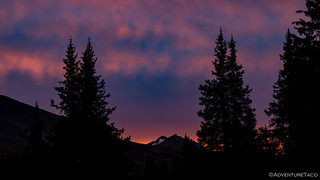
But I was then back in the tent for another couple hours, doing my darnedest to keep warm as the cloud cover thickened. Eventually of course, we were all up and about - the day's journey awaiting our departure. It was at this point - as Monte was wondering how long it'd take him to make it back up the trail through Birdseye Gulch - that Brett informed us that, and then chuckled, "We don't need to go back up. Wait, you guys didn't realize that we're continuing down?"
Uh, nope. We're not from around here, Brett! 
Happy to hear that our route out may not take a couple of hours, we decided it was high time for a morning break from wheeling.
No, that doesn't make sense, we hadn't done any wheeling yet. Regardless, someone had found a frisbee plastered with stickers from the Boise Idaho Jeep Club in the nearby creek and we proceeded to have a great time tossing it around for a good half hour or so before stashing where it belonged - it in a Trasharoo.
Eventually we all piled into our trucks and continued down the trail we'd started the evening before, the rocks and flexy sections just as frequent as they'd been on the way down.

As we descended toward CO-91 and ultimately Leadville, we crossed numerous streams that showed just how cold it'd gotten the night before - because it's not a balmy 32°F morning that results in 5" long icicles!

And then, we crossed something that we've never - to my recollection - crossed in the wild before: train tracks. I mean, we cross these all the time on paved roads, and we see old abandoned mine rail lines all the time. But to run into an active rail out here in the middle of nowhere - it was a little surreal, and we waited around for a few minutes to see if we could get lucky and see a train. (Nope.)
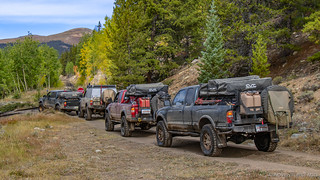


From there, the dirt road down to the CO-91 highway got remarkably better. There were still a few water crossings and slower sections, but all-in-all, we were definitely back in Subaru territory. And once we hit the highway, it was a short jaunt into Leadville.


There's no better description of Leadville than that carved into the sign at the edge of town, so rather than paraphrase, I'll just include it here:
Entering the cloud city. Altitude 10,152 ft. LEADVILLE
Here on the roof-top of the nation flourished about 1877 the most famous silver mining camp in the world. Perhaps 30,000 fortune hungers made this town the second largest city of Colorado in 1890. Here grew fabulous fortunes - among many, that of H.A.W. Tabor. A gay and cultivated social life, violent labor contests, ambitious projects like the ice palace marked the city.
In 1860, gold was discovered nearby in California Gulch but soon exhausted, the miners scattered. Seventeen years later, a heavy sand discarded by prospectors as nuisance in the pine woods here abouts was found to be silver carbonate.
Westward loomed Mt. Elbert, Colorado's highest peak, and Mt. Massive. The Sawatch (blue earth) Range to the west and the Mosquito to the east contain several of the loftiest mountains in North America.
As we drove through the town itself, it's quaint main street reminded me of the town of Wallace, Idaho, the buildings old, but in remarkable condition.

Still with plenty of fuel, we didn't even stop as we passed through town - our eyes set on a destination that we'd been waiting several days to enjoy: the Champion Mine and Mill. And it was up at the top of this mountain. 

Soon off pavement, we headed up the trail - the forest here completely void of any undergrowth. I commented on this fact over the CB radio, and Brett came back to say that so many people camped here as they staged to climb a 14er, that they essentially trampled anything shorter than 30 ft tall.
Well, that was a bit of a bummer, but looking back now I realize that despite the heavy traffic, there wasn't hardly a piece of trash in sight - so at least that's a reasonably good thing!
The further we got from town, the more rustic the trail became, avalanche shoots showing themselves as scars on the mountainsides, reasonably deep water-crossings serving as gatekeepers for the remainder of the trail...and a car wash for our amazing wheels.
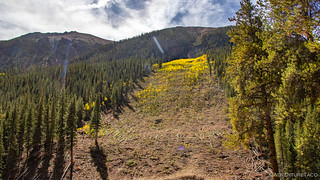
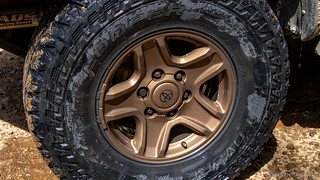
Soon enough, we were once again making our way up and out of the treeline, our trucks and their drivers breathing in the cool, clear mountain air.


As we got closer to the mill, Brett let us know that there'd recently been a bit of controversy over whether or not it was OK to drive up to the mill itself. Apparently the road was gated and - logically - the Forest Service said that if the gate was open, it was fine to drive up; otherwise, the road should be considered closed to motor vehicles.
We all hoped we'd find the gate open. Predictably, it was closed.  Undeterred, we parked our trucks and set off on foot.
Undeterred, we parked our trucks and set off on foot.

The Champion Mine was developed in 1907 when the Mount Champion Mining Company purchased the property and started construction mill capable of processing 50-tons per day and a 6,100 ft. long tramline - the first to pass over the crest of a ridge with an altitude over 13,600 ft at its highest point. Tram towers were constructed of wood and varied in height and design to follow the curvature of the cable strung between them. Electricity brought from Leadville powered the tram, which was equipped with forty-two buckets - each weighing 600 lbs and capable of holding nine cubic feet of ore which was shipped directly to the smelters in Leadville.
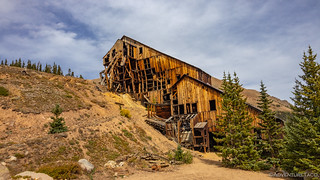
Significant production started in 1912 and continued until 1918 when the cost of shipping ore to Leadville smelters proved to be unprofitable. Today, the mill still stands tall, though long tough winters have obviously taken their toll. Clearly though, some renovation and preservation work has taken place recently - large steel cables and a few new wooden beams now helping to stabilize the leaning structure.

As we approached, the first thing we ran into was obviously a bit newer than the majority of the mill. And our friend Brett - always looking to beef up his truck - was intrigued by the size of the rear diff.

How can I fit this under the back of a Tacoma?
And then, we were to the mill itself. Still full of much of the original machinery, we took our time exploring this historic mining time capsule. It's boiler, and much of the other equipment all stamped with the same manufacturers as those we'd seen at the Pennsylvania Mine.


Tumblers, funnels, and all means of other machinery lay dormant as well. The work to get this stuff in place back in the early 1900's must have been enormous! And as a woodworker, the big wooden flywheel was especially intriguing.



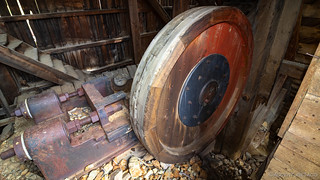
In our exploration, we also - perhaps expectedly - found bits of ore just about everywhere. Surely it was worthless, but we couldn't help but snap a photo of the shiny material.

It took an hour, but we eventually got our fill of the mill and headed back down to the trucks where Mike - who'd been feeling a bit under the weather - had been patiently waiting. After filling him in on what we'd seen, and presenting him with a couple bits of ore, it was time to continue our ascent up the mountain.
An astute reader may ask, "But how, didn't you say the road was closed?" To that reader, I'd say, "Thanks for paying attention, not many people actually read the text of a trip report!" Luckily for us however, the road to the mill was a fork off of the road that continued to the top of Mt. Champion, meaning that we were free to continue on, climbing up above the mill - the view down, dramatic in its own right.

Just as the trail had some gatekeepers obstacles near the bottom, so too were there some larger gatekeepers before we could proceed much further towards the top. Several of these offered easier and harder lines, our approach summarized nicely by this meme:

And up we went.
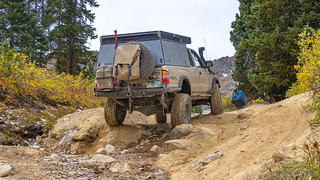


About this time we were all getting hungry and so before reaching the very top - where we were unsure what the wind situation would be - we stopped in a small saddle and pulled out our camp chairs. It was quite pleasant here - except for the smell of diff oil that'd burped up through my front diff breather - and we all enjoyed our sandwiches, chips, and some miscellaneous fruit in good company and among the clouds.


Why does diff oil smell so damn bad?!

It was 2:30pm in the afternoon when we made our final ascent to the top and found ourselves with yet another view to die for.


A view that we just kept trying to get a wider and wider shot of. It was spectacular, really.
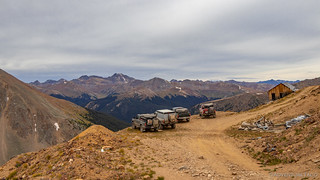
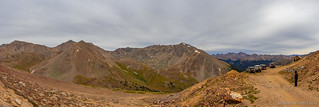
With plenty to explore here on the top of the hill, we set off to explore on foot. Old buildings - likely bunk houses for the miners who would enter shafts on the side of the mountain to dig ore - still stood, though they'd clearly seen better days. Small sheds that covered what used to be mine shaft entrances looked as though they were only a few winters from falling down. And scattered about, detritus from the miners - several different variants of purple glass, remnants of the old tram line. It was an explorers gold mine.
Literally.



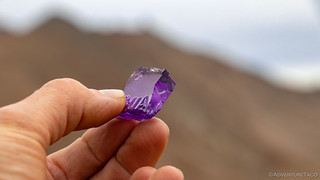

And all this time, the view around and below us continued to impress. In the distance - and far below us at 12,095 ft - Independence Pass, the second highest (paved) pass in Colorado.

Eventually - as always seems to be the case - we had to pull ourselves away. We'd explored all we could in the time we had, though there always seemed to be something to come back for. For now though, we knew that if we were going to find camp before dark, we needed to skedaddle our way back down the mountain, and that's just what we did. Mostly. I mean, sure, there were a few stops for photos of the sole tram tower standing valiantly on the ridge.


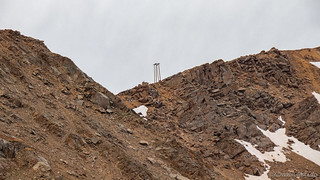
Down always seems to go faster than up, and we were soon retracing our steps through the last of the water crossings and onto the highway. With several miles of pavement before camp, we'd aired up and so at this point were making good time as we raced the afternoon sun. A quick stop in Buena Vista, CO, for fuel and we continued up and over the newly paved Cottonwood Pass - the only paved pass higher (by 21 ft) than Independence Pass that we'd looked down on just an hour earlier.


We found camp at sunset in the Taylor Park area and were quick to find a suitable beetle kill for our - now ritual - bonfire. It'd been another amazing day in the high mountains of Colorado, and a special one at that. See, it was Brett's last day with us - his plan to leave for home after breakfast in the morning.

That'd be a little later than usual, given our plans for one of our famous group feasts - but still, it would turn out to be the beginning of the end. A time of mixed emotions on any trip.
But that wasn't all that was in store for the coming day. By it's end, we'd be left wondering...
What the hell was that?
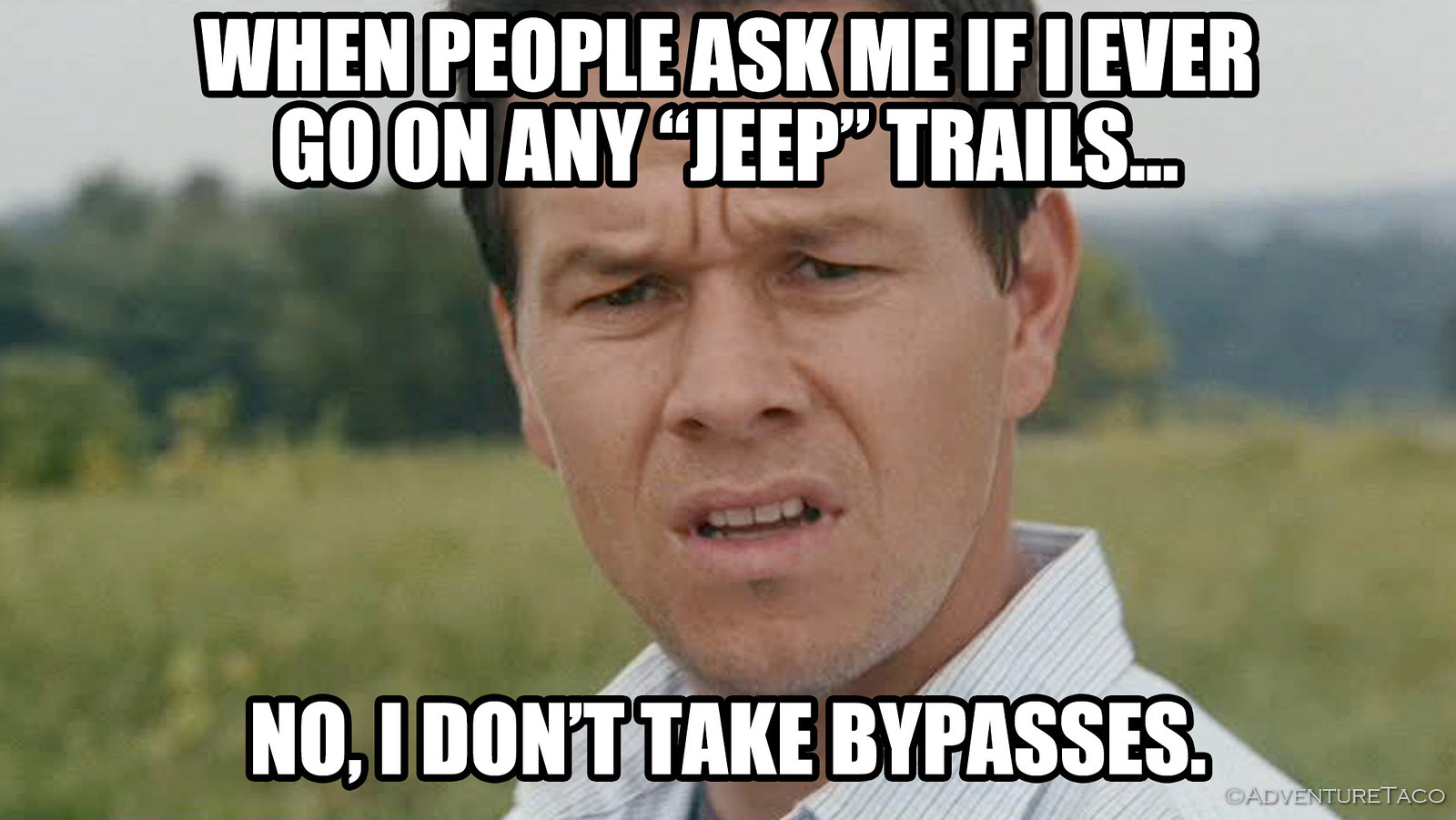
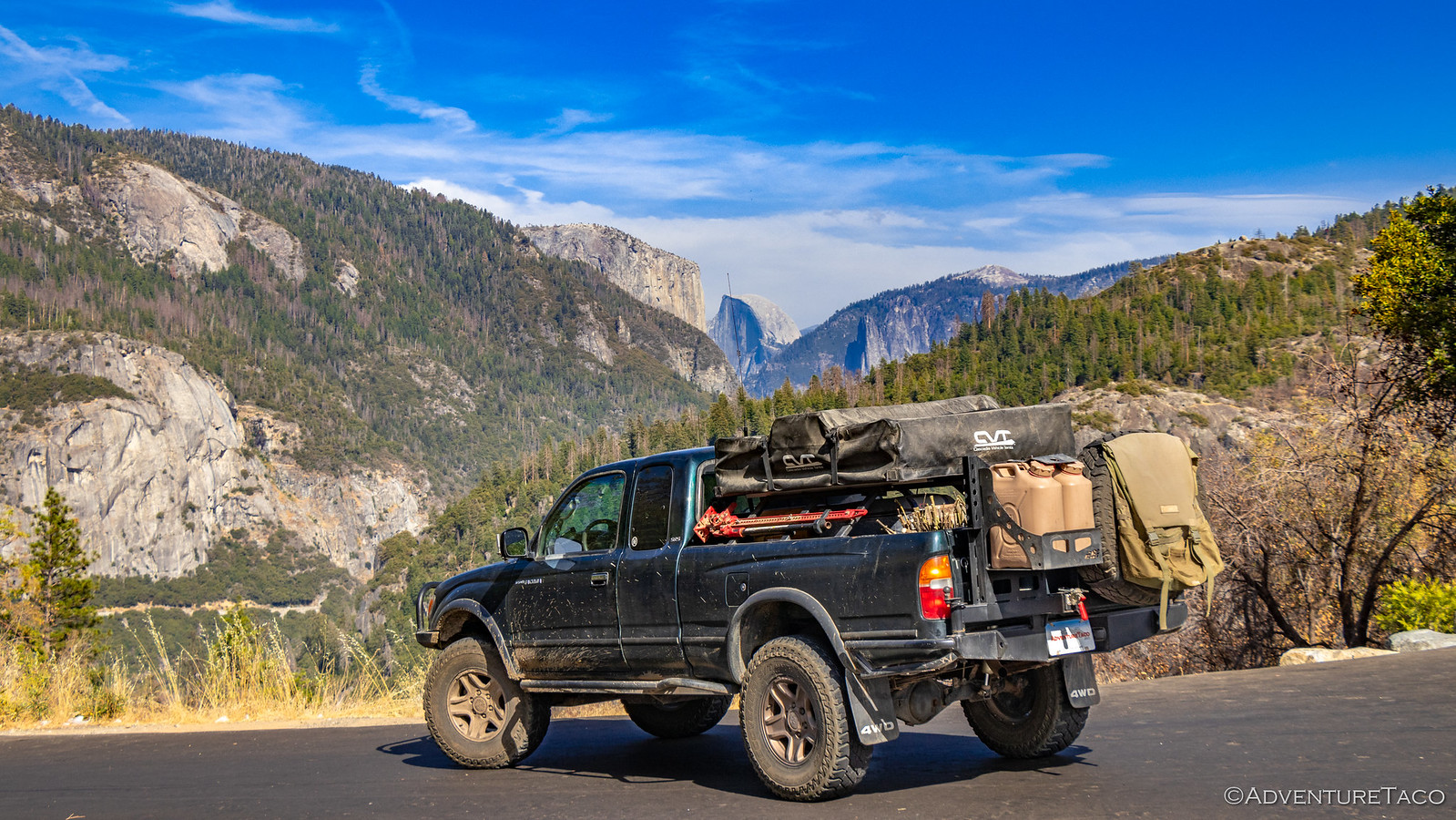





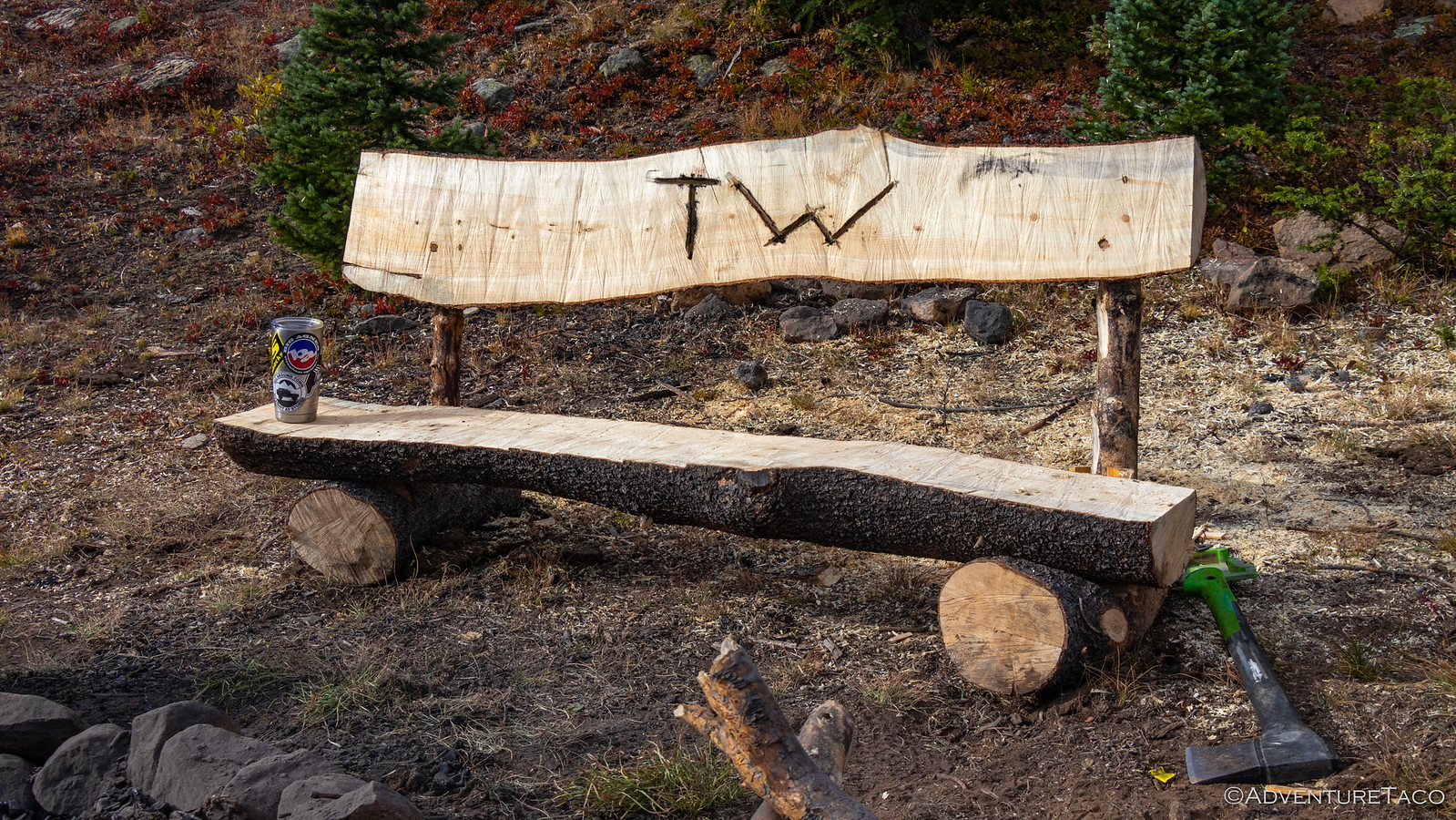

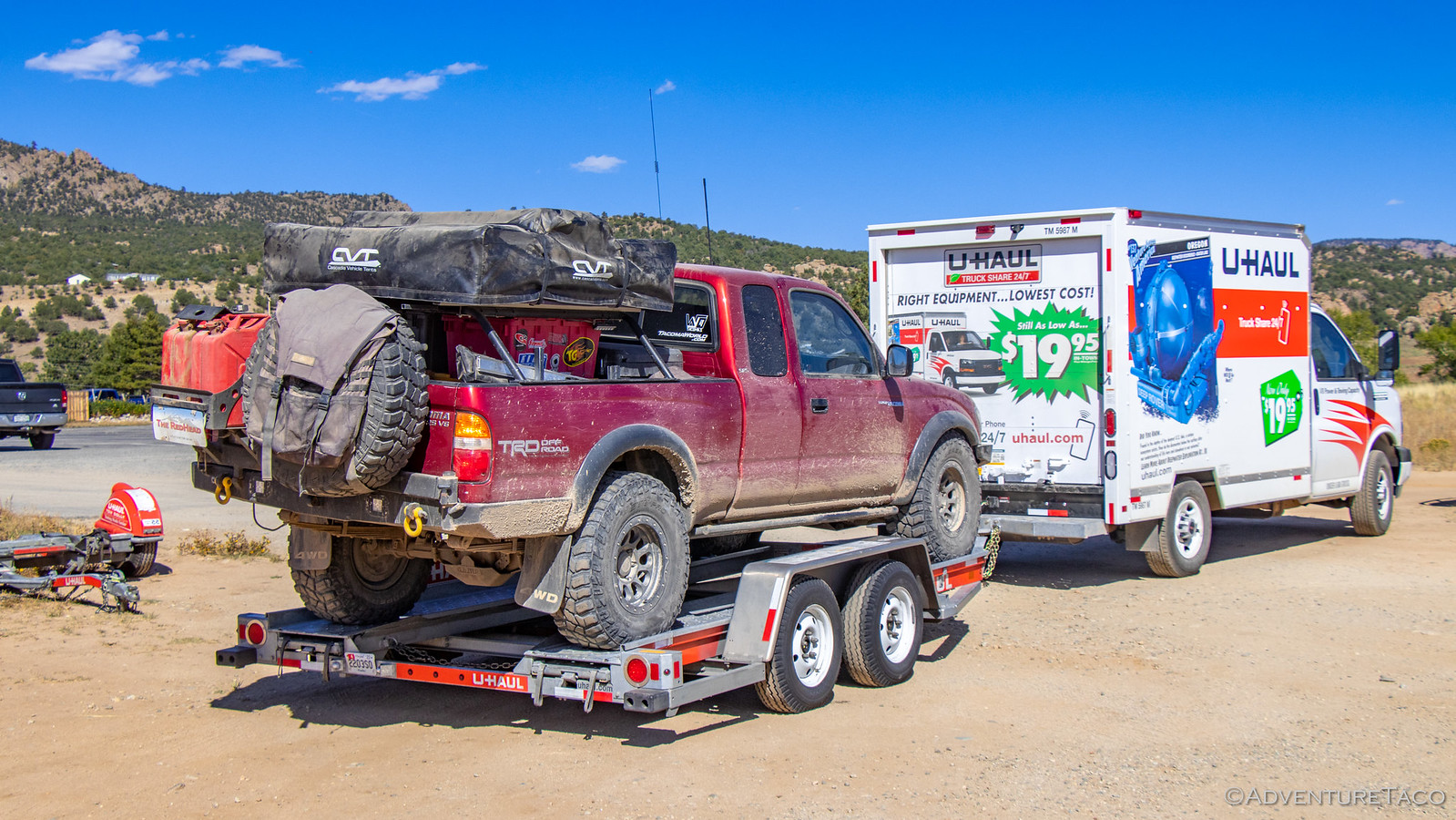

Two things:
1- What the heck do you do for a living that can afford so much time to go out and explore?
2- How do you get your wife to let you go out so much??
PS: Love this particular trip report...been wanting to do this loop myself for years, but haven't found anyone to do it with 🙁
Glad you're enjoying the trip report. Is a bittersweet one for me, since we didn't get to explore as much of Colorado as I'd have liked (as you'll see in the next couple chapters). But hey, a great reason to go back!
As far as time spent out on the trail - I'm a lucky guy from both a work and wife perspective! @mrs.turbodb likes to tag along whenever she can, so that's great, and work is a bit "at my leisure" these days, which means plenty of flexible time for adventures when the opportunity presents itself!
Hello there! Just came across this piece and absolutely loved reading it. We live here in Denver and are up in the mountains a lot for work along I-70 all the way to aspen. My wife and I have been looking into doing more exploring off the beaten path. Would love to talk to you more if possible about the trips you take up here and what type of vehicle that is most common for this.
Hi Andy, great to hear you found the story and had a good time reading it - that's why I write them up and post them on the site :). Happy to chat more about trips - feel free to post here or to use the Contact me link up at the top, which will send an email and we can pick up there.
As far as vehicles go, it really depends on the types of roads you want to travel, as well as how you want to spend the night. The spectrum of course spans Subarus, Jeeps, Tacomas, and RVs depending on your taste!